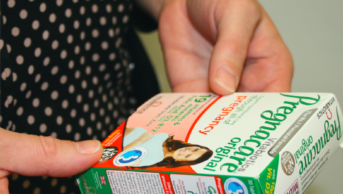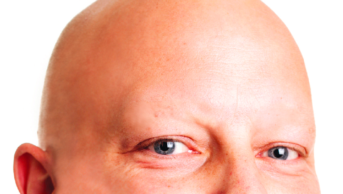This content was published in 2010. We do not recommend that you take any clinical decisions based on this information without first ensuring you have checked the latest guidance.
A: Heel fissures form at the junction between the hairless skin (on the bottom of the foot) and the hairy skin on the side of the foot. They are essentially tears in the epidermis. For most people, cracked heels are nothing more than a cosmetic problem — the condition is characterised by calluses and fissures in the heel area, and the skin often appears darker and, occasionally, has a yellowish tinge.
In more advanced cases, however, the cracks can become painful, especially during weight-bearing, particularly if they penetrate into the deeper layers of the skin (ie, the dermis). In the most severe cases the fissures can bleed and become infected, leading to complications such as cellulitis. One study found that 29 per cent of women claimed to have experienced cracked heels.
Heel fissures occur predominantly as a result of dry skin (xerosis), which can have many contributing factors. During walking the heels support the entire body weight. To absorb shock and soften the load, a fatty pad (corpus adiposum) exists under the heel bone (calcaneus). Normal skin is flexible but skin that is dry and hardened is less so. Walking places stress on the fat pad — especially if the skin is dry — increasing the likelihood of cracking.
People tend to experience cracked heels more in the summer months. However, the problem can also occur when the skin is exposed to drying environments, such as air-conditioning or excessive heat, particularly if the person is bare footed. People predisposed to dry skin conditions, such as atopic dermatitis, psoriasis, juvenile plantar dermatosis and moccasin-type athlete’s foot (which produces a dry scaling over the entire sole and heels) are more likely to have heel fissures.
Paradoxically, because excessively wet skin has lower tensile strength (so can easily crack), heel fissures can also develop in people who suffer from excessive sweating or who spend a lot of time in water.
Cracked heels are often preceded by the development of a callus on the heel rim, formed through repeated friction or irritation between a shoe and one part of the foot. One of the most common causes of cracked heels is the use of open back shoes such as sandals. Indeed, that heel fissures appear to be more of a problem in women than men probably reflects the type of footwear worn by women.
Normal shoes support the heel pad but when open back shoes are worn there is no support for the fatty pad, which undergoes lateral expansion, increasing the risk of cracking.
Cracked heels can be associated with diabetes, hypothyroidism and peripheral vascular disease. Some people with diabetes have autonomic neuropathy. If damage occurs in the nerves to the sweat glands, the resultant xerosis can leave the skin hard. In patients with hypothyroidism, the lower metabolic rate also reduces the degree of sweat produced, giving rise to xerosis.
Poor tissue viability in peripheral vascular disease and loss of skin elasticity also increases the risk of heel fissures developing. Conditions associated with gait that can increase the risk of cracked heels include heel spurs (calcaneal spur) and flat feet (pes planus).
People who are overweight are at a greater risk of heel fissures because the increased pressure on and lateral expansion of the fat pads. Another factor that can increase the risk of cracked heels is standing on hard floors for prolonged periods.
The main treatment for cracked heels — provided that the skin is not infected — is the regular use of emollients. Moisturising the skin two to three times a day restores suppleness and will prevent further cracking. Although there is little evidence on which to make any specific recommendations on products, ointments have a greater occlusive effect than creams so are preferred. Moreover, using ointments under occlusion (eg, wrapping clingfilm over the heels) will help improve the condition.
There are a range of specific heel repair products on the market but little published evidence to guide the selection of particular preparation. Several products contain urea, a humectant that increases the water content of the epidermis by drawing water from the dermis. Urea also has keratolytic properties — particularly at concentrations above 10 per cent — so softens the skin (eg, CCS Foot Cream contains 10 per cent and Flexitol Heel Balm contains 25 per cent urea).
Other ingredients in heel repair products include occlusive agents (eg, beeswax, lanolin) that form a physical barrier over the skin, preventing water loss, as well as other keratolytic agents, such as alphahydroxyl acids and salicyclic acid.
In this case, the patient could be recommended a moisturiser to be used frequently but should also be given advice on footwear, environment and, if appropriate, weight loss. The patient should be asked about associated medical conditions.
For stubborn heel fissures, particularly those related to eczema or psoriasis, dermatologists sometimes prescribe fludroxycortide tape (Haelan). This is cut to a quarter inch around the lesion (corners should be rounded off) and applied to the fissure with gentle pressure, working to the edges and avoiding excessive tension. Haelan Tape is waterproof and, in most cases, is used for 12 hours a day (longer if needed), until the fissure has resolved.
If there is no improvement after five days or if irritation occurs, use should stop. To remove the tape, one corner should be lifted and the tape pulled back over itself with one hand while holding the exposed skin in place with the other. Patients should be advised to monitor for signs of infection.
If the simple use of moisturisers or heel repair products does not resolve the problem, the patient can also be referred to a podiatrist for treatment that can range from the use of heel cups to redistribute the weight and support the heel pad to the use of a glue to hold the skin together to help cracks heal. The glue is made from cyanoacrylate, which is a material used to close wounds and lacerations in accident and emergency departments.
You might also be interested in…
How to select the right mouthwash

Thalassaemia and iron supplements
